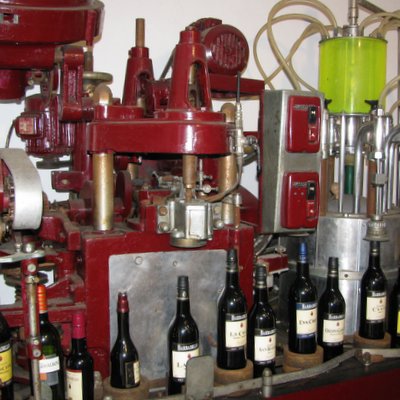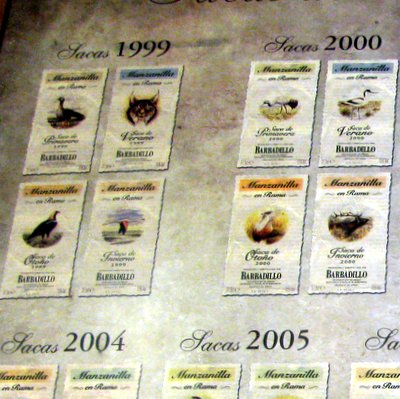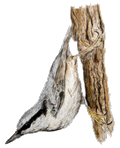
- Sherry Wine:
- Production
- Classification
- Cities & Bodegas
- Tastings
- Analogues
- Authors & Contacts
- Ðóññêèé ñàéò
Sherry wine
Sherry Wine Filtration
Olga Nikandrova and Denis Shumakov.
After all those major operations and transformations, which are made or happen with sherry during its ageing, bottling sherry and filtering it prior to this seem boring. But it is bottling and filtering which adjust sherry’s appearance, taste and flavor to the ones most wine lovers are familiar with.

An old bottling machine
at Bodegas Barbadillo
First, sherry is cold stabilized — when subjected to cold temperatures excess tartaric acid is deposited in the form of wine stone and may be easily removed from the wine. Then sherry is clarified by various filters, bottled and sold.
Dry sherries of oxidative ageing normally require less filtration, which is sometimes done only a more appealing appearance of the drink. However, sometimes, there are more rational reasons to filter these sherry types — there can be some minor amount of proteins left, which is necessary to get rid of.
Pedro Ximénez and Moscatel may be bottled without any filtering — if bottling is made not very often (no more than two times a year), then natural sedimentation of sherry in the solera would be enough for “commercial cleanliness” of the drink.
In short, everything could be simple and boring, but for a nuance concerning Fino and Manzanilla, as is always the case. When preparing biologically-aged sherries for bottling one encounters one rather obvious contradiction. On the one hand, for long-term storage and appeal to the eye these wine should be clarified most thoroughly. On the other hand, excessive filtering “cleans up” many enjoyable characteristics acquired by sherry during the years of ageing under flor. If oversimplified, the situation looks even absurd — at first Fino and Manzanilla spent years under flor and get saturated with different interesting components, but then subjected to some fine active carbon filtration, which rips off most accumulated by sherry enjoyable supplements.
Nowadays, filtering biologically-aged dry sherry is a valuable and important stage of the technological process, and it influences not only the visual appeal of the drink, but also its flavor and aroma. To verify this, it’s enough to try lightly filtered sherry types, which most often bear the words En Rama as a part of their names.

Stickers for the first series
of Bodegas Barbadillo Manzanilla En Rama
The matter is that non-filtered sherries, for all their appeal, can be stored for a very short time — so they are very rarely put on the market. Modern-day (and rather popular) Finos and Manzanillas En Rama are only less thoroughly filtered than other biologically-aged sherries. This less thorough filtration can be either a simple consequence of the use of coarser filters or a more complicated (and interesting) consequence of the use of traditional (that is outdated) clarification methods.
Some “lightly filtered sherries” are clarified with egg whites and clay. Egg whites (thank to the qualities of albumen which they contain) collect suspended particles — so it is enough to remove flakes which have been formed this way. This is done several days later with the help of special clay mined in Lebrija. The clay is mixed with the wine and the mixture is left for a few days to clarify. The clay settles down absorbing albumen and other foreign particles on its way through the wine.
A stunningly beautiful technique. Read next — Sherry Types.
Warning!
This site can contain information about drinks excessive consumption of which may cause harm to health and is unadvisable for people who didn’t come of age.
Share Sherry
- Sherry.wine, FEDEJEREZ
- Copa Jerez, Sherry Week
- Sherry Notes, Jerez de Cine
- Los Generosos, Criadera
- Jerez-Xeres-Sherry
- Los Vinos de Jerez
Articles
- There are more articles in Russian than in English in this website. Sorry :(
Reviews
- To our great regret, we didn’t have time to translate tasting and traveling notes into English. But, if you want, you can see them in Russian.

